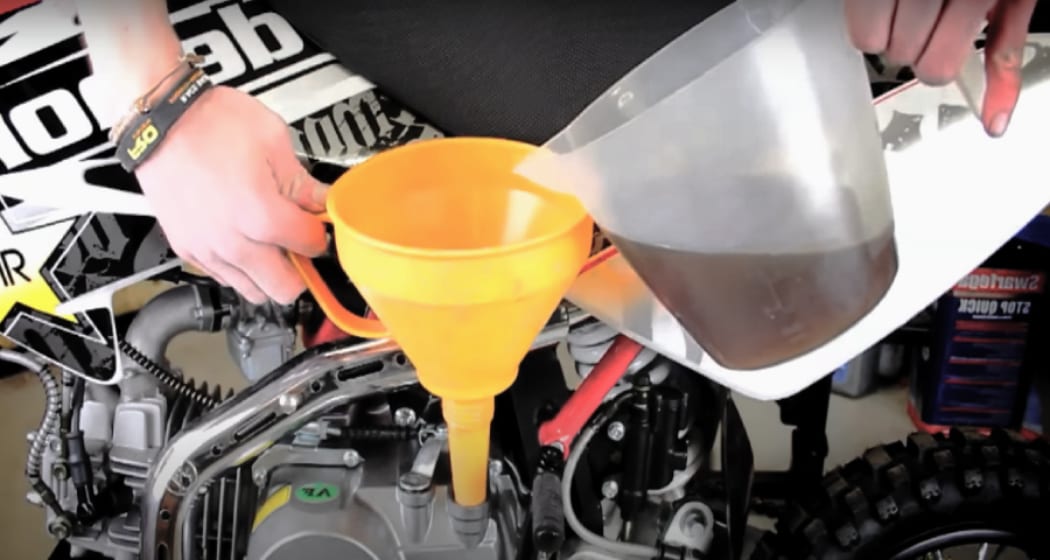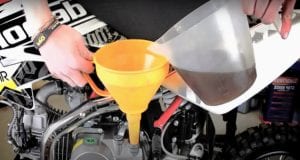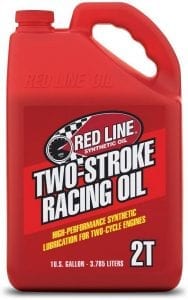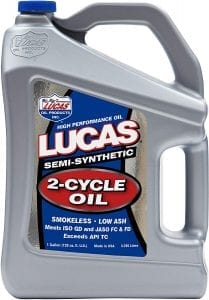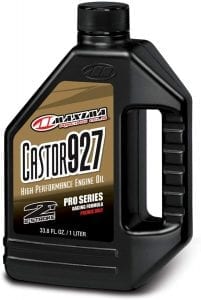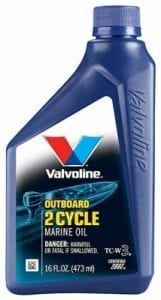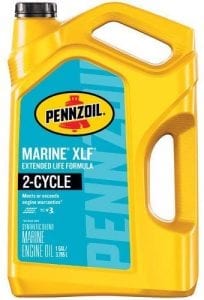What is the Top 2 Stroke Oil for Dirt Bikes?
Two-Stroke dirt bikes require high-quality oil to function properly and last longer. Oil serves many purposes aside from the lubrication of engine parts. It picks up dirt as it flows, thereby keeping the engine free of particles.
Oil also protects the engine from overheating, but this is among one of its lesser uses. Provided the oil is changed often, the engine’s running will remain top-notch, and the engine’s status stays high quality.
There are three main categories of two-stroke dirt bike oil. The first category is castor based oil. They are organic and hence are known for leaving carbon residue. They need a lot of maintenance because of this.
They are also known to separate from gasoline during the cold weather, so winter riding is out of the question if you use castor oils. However, it has unmatched lubrication qualities and provides heat protection to the engine parts.
The second category is the semi-synthetic oils. They are mixtures of castor and synthetic oils that can give the best of both worlds. The ideal ratio is 80:20 synthetic to castor oil. They give optimal performance and require less maintenance than pure oils.
They burn clean and are, therefore, good for the environment. They also provide excellent lubrication to the motor parts. They are affordable and hence widely preferred by many dirt bike riders.
The final category is fully synthetic oils. They are premium oils that can be used all year round and do not lose their cold-weather performance. Riders who are interested in having a little fun in the winter season can do so without worry.
They are consistent in any weather because of how they blend well with gasoline. However, they are not as good as castor oils in terms of heat protection and lubrication. They also leave chalky deposits on the exhaust pipe.
So, which oil is best for your two-stroke dirt bike? This depends solely on what you prefer and in what conditions you ride in. In this review, we will discuss the five best dirt bike oil brands for your two-stroke dirt bike.
Looking for the Best 4 Stroke Dirt Bike Engine Oil instead?
Top 5 Best 2 Stroke Dirt Bike Oil
① Red Line
Red Line oils have been among the best oils available in the market for over fort years. It falls under the category of fully synthetic oils. It is preferred by many riders who take their performance to the edge.
It is stable in high temperatures and is great in competitions and longer riding sessions. It leaves no residue in the exhaust, and because of the clean burn, it is environmentally friendly. It does not emit any carbon-based products and is clean.
The oil can be used without mixing it with any other oil. It is versatile and usable in various two-stroke engines like in snowmobiles and other motorized equipment. It is also certified for use in races.
It produces more power as you keep riding and continues to have optimum performance because of gains ranging from three to five percent. Shifting is easier, and combustion chambers and the piston crowns remain clear.
Pros
- High-quality performance.
- Zero-emission.
Cons
- It is expensive.

② Lucas
Lucas oils have also been of excellent quality for years. This particular one is blended to make semi-synthetic oil that boasts of no emissions. The formula is a blend of mineral oil and synthetic oil together with an additive.
It gives a clean burn making it good for the environment and great for your bike. It is suitable for air-cooled engines. Because of its low-ash content, it is preferred by people interested in clean living.
It is versatile, and its use in liquid-cooled motors and oil injection systems has the same great quality as in air-cooled engines. In the oil injection systems, there is no need for premixing because it is already done.
By using this oil, you can be certain that the exhaust will not be blocked. It produces no residues keeping the interior of the motor clear. The oil can be diluted to make it blend easily with gasoline at various temperatures.
This makes it suitable for longer rides and in some competitions. Even though it is versatile enough for other two-stroke engines, it is not suitable for certain motorized tools that need lesser ratios.
Pros
- Highly versatile.
- There is no need for premixing.
- It gives a clean burn.
Cons
- It is not suitable for all two-stroke engines.

③ Maxima Castor927
Maxima are well known for their high-quality racing oils. The Castor927 falls under the category of castor oils but has been modified to eliminate all of the drawbacks of castor-based oils. It has been highly refined, making it biodegradable hence good for the environment.
It is suitable for use in races because of the additives that make it perform well at a range of temperatures. Riders can rest assured that they are not polluting the air because this oil has been made to burn cleanly.
It also does not leave residue in parts of the engine and leaves them clear and clean. It has excellent lubricating qualities that enhance the performance of the pistons and the dirt bike overall.
It is made to withstand carbonization and vaporization to keep it working for longer. They cannot be used in oil injection systems. However, they can be used as premix oil with both leaded and unleaded gasoline.
Pros
- It is environmentally friendly.
- It provides double lubrication.
- It can withstand high and low temperatures.
Cons
- It cannot be used in engines with oil injection systems.

④ Valvoline
It prevents corrosion and wearing parts of the engine and provides rust protection when the bikes are stored. It burns cleanly, therefore having no emission into the atmosphere. It also leaves no deposits in the engine parts.
It is very versatile and can work with either premix or injection engines. It also works with engines that use liquid coolant and those that are air-cooled. It also performs well in engines that need a gas-oil mixture.
It works with several other machines apart from the dirt bike engine like the lawnmower and jet skis.
Pros
- It is very versatile.
- It can be used in several types of dirt bike engines.
- It has no carbon emission harmful to the environment.
- It does not cause blocking of the engine parts.
Cons
- It is expensive.

⑤ Pennzoil Marine
It is designed for clean running of the engine. It also gives protection against scuffing in the motor giving it more sustained performance. It leaves the engine parts clear of any carbon deposits.
The oil works with oil injection monitors and can even be used as a premix. It is certified for use with many different engines because it is versatile. It is almost guaranteed that it will work with your bike without any hitch.
Pros
- It is versatile.
- It works in both engines with oil injection systems and premix.
- It is environmentally friendly.
- It does not leave residues that cause blockages.
Cons
- They need to be changed too often.

More Information
Petrol-Based Oil
Apart from the three types of two-stroke engine oils we have seen for dirt bikes, a fourth is mainly for use in other two-stroke engines. The fourth type is petrol-based oil. It is a mineral oil that is not suitable for dirt bikes.
It does not burn and the others and does not have the required lubricating properties necessary for dirt bikes’ high-quality performance. It has a low film strength protection and could lead to damage in the motors if used.
Premix
Once you get the premix oil of your choice, you have to mix it with gasoline. The preferred type of gas you need has to be free of ethanol because of the carbon deposits they leave in the pistons and combustion chamber.
However, it is rare getting ethanol-free gas, so the best alternative is gasoline with not more than ten percent ethanol. An oil-gas ratio of 32:1 used to be the preferred ratio. However, due to external factors like terrain and elevation, the ratio changed to up to 60:1.
Riding without premix could seize up the engine, and riding with too much, damages the spark plugs. So, the ideal amount has to be as much oil as possible to maintain a clear engine. Older models run well with the 32:1 ratio, and newer models run on the 50:1 ratio.
How to Mix
To get more accuracy, it is advisable to mix it in a gas can before pouring it into the engine. First, using a measuring cup, measure the fuel, and pour it into the gas can. Then, take the premix and pour it in the fuel and mix them.
When you are not planning to ride for a while, you should drain the tank so that the fuel does not become sticky.
Oil Change
Dirt bikes require frequent oil changes compared to other motorcycles because of the nature of dirt biking. The oil can be contaminated by dirt, debris, and other small items that go through the air filter.
During combustion, small pieces of carbon get into the oil and result in the oil’s darkening. However, the most common pollutant is small particles of aluminum, and they may damage the clutch.
Large quantities of pollutants in oil reduce its lubrication abilities and cause the wearing of several parts of the engine. How regular oil needs to be changed depends on which type of oil you use.
Mineral-based oil needs a change every two thousand miles because they already have poor lubrication qualities. The contaminants render them totally unusable. Semi-synthetic oil should be changed after about six thousand miles.
Fully synthetic oils are useable for a long time and should be changed after about seven thousand to ten thousand miles. If you ride regularly or travel often, you need to change the oil now and then.
You need to determine with your eyes if it is time for a change. A dipstick will allow you to take a look at the oil and scrutinize it. The standard color of the oil is brown to slightly black. A darker color than those two means the oil is very contaminated.
Watery oil needs a change as well. Other ways to examine the oil are by removing the oil level plug or the oil sight window.
Four-Stroke Engine Oil
Oils for two-stroke engines are specialized. Two-stroke engines use a premix of gas and oil that gets combusted to lubricate the piston and rings. They also use oils safe for injector systems. In this case, the manufacturer recommends the perfect ratio.
Four-stroke oil engines do not use oil mixed with gas. Their oils are weighted in rates like 20w-50. They will not work in two-stroke engines, just as two-stroke engine oil cannot work in four-stroke engines.
How Do I Know When My 2 Stroke Dirt Bike Needs Oil?
Oil is a critical component of your dirt bike engine. This guide will help you find the best oil for your dirt bike and keep it running smoothly. First, you’ll need to check the dipstick on your dirtbike, which should be located under the seat or in front of the forks near where they meet up at the top.
The stick can move from side to side, so all you have to do is pull it out a bit before wiping off some excess fluid with a rag and checking how much there still is in its reservoir.
If any liquid comes away, then that tells us you’ve got less than one quart left until things could start getting rough. In this case, we always recommend topping up to a full quart of oil – but if there’s plenty left, make sure it is at least halfway up the dipstick.
How Do I Dispose of Used 2 Stroke Dirt Bike Oil?
There are several options for disposing of old, used engine oil. Most recycling centers accept motor and automotive fluids like engine oils. Some gas stations or auto repair shops will also take the dirty fluid off your hands for a small fee; ask first.
You can contact your local government to see if they have any disposal regulations in place that you should follow as well. Alternatively, there is no shame in taking it out back and pouring it on the ground (please don’t drink this).
The best way to avoid these messy situations altogether is to always keep an eye on how much motorcycle fuel you’re using so you know when it’s time to change the filter before anything bad happens.
Frequently Asked Questions
Can You Use Any 2 Stroke Oil in Dirtbike?
Most people believe that dirt bike riders should not mix two-stroke oil with four-stroke engine oils. The problem is, it’s difficult to find a high-quality two-stroke motor oil for your dirt bikes nowadays.
That said, there is no definite answer on whether or not you can use any two-stroke fuel in your dirtbike and still get good mileage out of it. It would be best if you only used top-notch brands as they have been formulated specifically for this purpose.
Should I Use Synthetic Oil in My Dirt Bike?
Some riders cringe at the idea of a dirt bike using synthetic oil. They don’t believe it’s as good for their engine, and they worry about clogged filters or excess wear on parts.
The truth is that in most cases, synthetics are better than petroleum-based oils because they flow more easily throughout your engine during acceleration and use less energy to get them through those tight spaces.
Synthetic engines also run cooler, so you won’t have to spend time adding extra heat when riding your gas-powered dirt bike in hot weather.
Does Dirt Bike Oil Go Bad?
Yes, dirt bike oil will go bad. Oil is a chemical compound that consists of an organic base and inorganic additives such as pyridines or phenol compounds to help it work better. Unfortunately, when the additive breaks down over time, there are harmful byproducts produced during combustion.
These can cause complications with other engine parts like pistons, rings, and cylinder walls which all need protection from these chemicals’ corrosive properties. This corrosion leads to wear-and-tear on your motorbike’s internal workings, which could lead to catastrophic failure requiring costly repairs or replacement altogether if not addressed early enough.
When Should I Change My 2 Stroke Dirt Bike Engine Oil?
If you ride your dirt bike often, typically every 100 hours is a good time to change the oil. The best way to see if your engine needs new oil is by taking it out and inspecting any signs of residue or sludge buildup around the cylinder head nuts.
Another telltale sign that your engine might need an oil change is small bubbles coming from underneath the dipstick when checking the levels below cold startup. This means air has been introduced into the system, resulting in lower compression standards such as rings, pistons, and valve seats.
How Much Oil Does Your 2 Stroke Dirt Bike Need?
There are a lot of factors that go into determining how much oil your bike needs. First, you need to determine what type of engine cut-away (or layout) your motor has: single or two-stroke.
Next, you will want to check the manufacturer’s recommendations for their specific model on average miles per gallon and weight. Again, these numbers must match the amount of total hard riding time an individual does every week.
For example, if someone rides only once a month, they should never need more than one quart (.95 L). On the other hand, riders who log over 100 hours in one year might be better off going with at least four quarts (.36L). Regardless of what kind of vehicle it is, always calculate the correct amount of oil and never overfill.
Conclusion
You must select the best oil for your dirt bikes. This will depend on how often you ride and what type of engine you have. Dirt bikes vary, and because of that, manufacturers often give recommendations on the type of oils that can be used.
Riders should also pay attention to whether the oils can damage their motors. Premixes with ethanol-gasoline will result in residues of carbon particles that can cause blockages. They are bad for the environment because of air pollution.
Synthetic and semi-synthetic oils last longer than mineral-based oil. They offer better lubrication qualities, and this capacity cannot be easily compromised with pollutants. So riders who use mineral-based oil should make a point to change their oil often.
If you ride regularly or take many trips, it is important to change your oil often. If you do not plan on riding for a long period, drain the oil from the tank to avoid gumming up. There are reputable brands that manufacture high-quality oil that raiders should buy.
I would recommend Red Line two-stroke oil. It is fully synthetic and has the highest film strength protection and lubrication capacity. It is free of pollutant emissions and does not cause blocking of the pistons.
It is stable at a varying range of temperatures making it suitable for races and long-distance riding. Get yourself the Red Line oil for high-quality performance.
